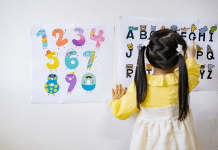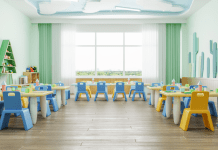If I could give only one piece of advice to soon-to-be parents it would be this: “Cultivate your child’s interest in quiet activities.” Believe me, your future self will thank you!
Although our kiddo is extremely high-energy, we’ve stumbled across a parenting hack: he will happily entertain himself with a good puzzle. We get a few moments of silence, and he gets the benefit of expanding his attention span and focus! Puzzles were among the first sit-down activities we did when our dude was little. We started with the big knob, wooden variety and then moved on to larger wooden shapes without handles.
It’s recommended to start as early as 18-months with basic puzzle-type learning games like shape sorters.
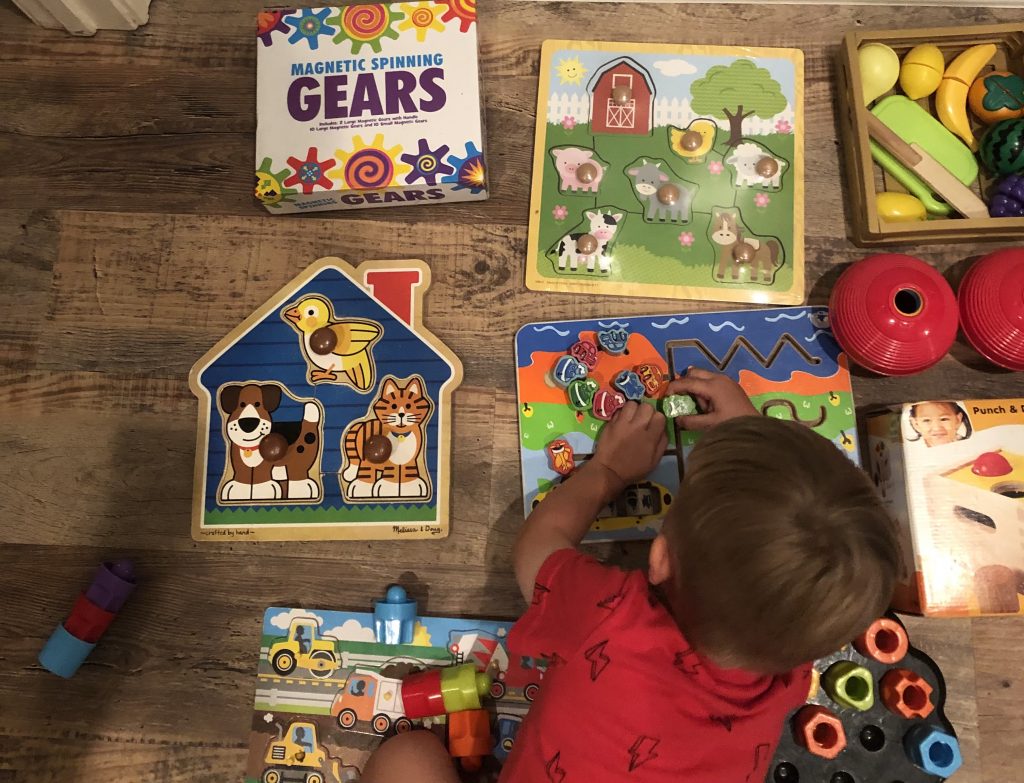 I love that there is a never-ending variety when it comes to learning through puzzles. We’ve been known to grab character-themed puzzles from a dollar store as
I love that there is a never-ending variety when it comes to learning through puzzles. We’ve been known to grab character-themed puzzles from a dollar store as bribe prizes. And as kid’s interests change, it’s easy to acquire new puzzles at a fraction of the cost of most toys. The good news and bad news of said easy acquisition? Where to keep them?!
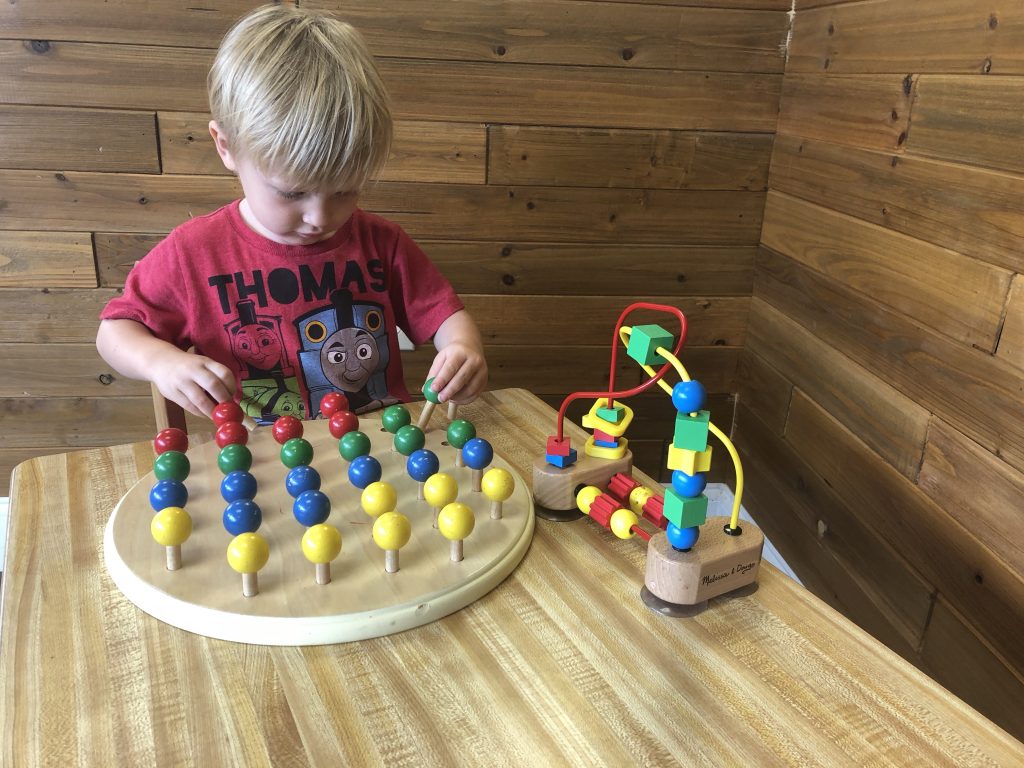
Puzzle Organization Station
We have so many that we decided to create a dedicated puzzle station. This three-tier rolling cart came from At Home, but I’ve also seen them at Michaels and Hobby Lobby. We like that our toddler can easily see his choices and (in theory) put them back after he’s done.
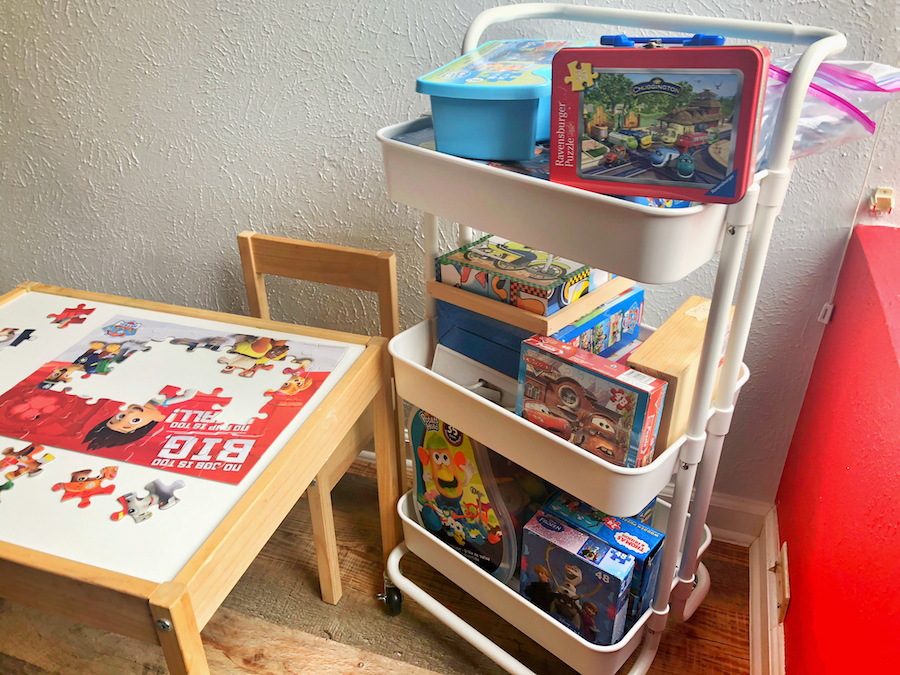
Types of Puzzles for Toddlers & Preschoolers
Standard Jigsaw Puzzles by Interest
The current obsessions in our house consist of Frozen, Cars (specifically Lightning McQueen), Thomas & Friends, Toy Story, and Finding Nemo. Consequently, we have books, characters, coloring books, stickers, and puzzles in all of those respective themes. Some of them I have purchased full retail (gasp). Others I’ve found at Divine Consign, Once Upon a Child, or even thrift stores.
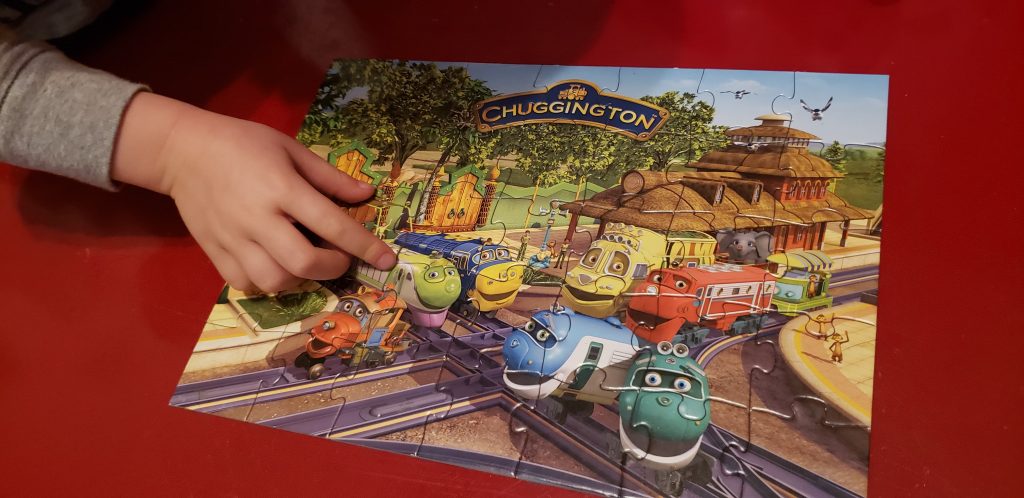
Word to the wise – if you’re planning on purchasing a pre-owned puzzle, open the box and count the pieces!
Large Format/Floor Puzzles
I stumbled across large-format puzzles once at a resale shop and they soon became a family favorite. If you’re looking for these online, they’re usually called a “floor puzzle.”

Shapes & Patterns
We learned from our kiddo’s Montessori teacher that shape and pattern block puzzles are considered an intro to math learning for preschoolers. The ability to see that several shapes together can create a train, for example, helps teach spatial awareness and problem-solving. This Melissa & Doug Beginner Wooden Pattern Blocks set is recommended for ages 3-5, although I think we introduced it around 2.

Cube Puzzles
Recommended for ages 3-6, cube puzzles offer a compact way to have several puzzles in one set. Ours has 6 different vehicle-themed puzzles to solve.
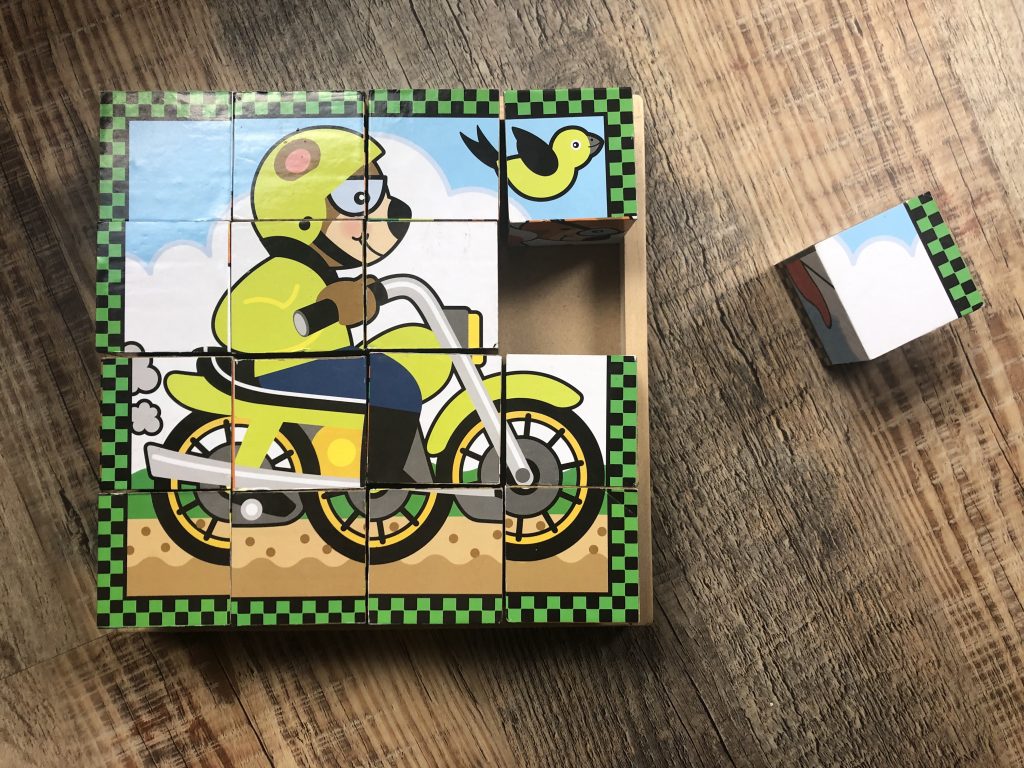
Mr. Potato Head
Similar to the shapes and pattern puzzles, Mr. Potato Head isn’t a traditional puzzle, but it helps foster creativity, hand-eye coordination, and laughs. As a child of the ’80s, I’m impressed with how many versions of Mr. & Mrs. Potato head there are these days. Have you seen Spider-Spud?
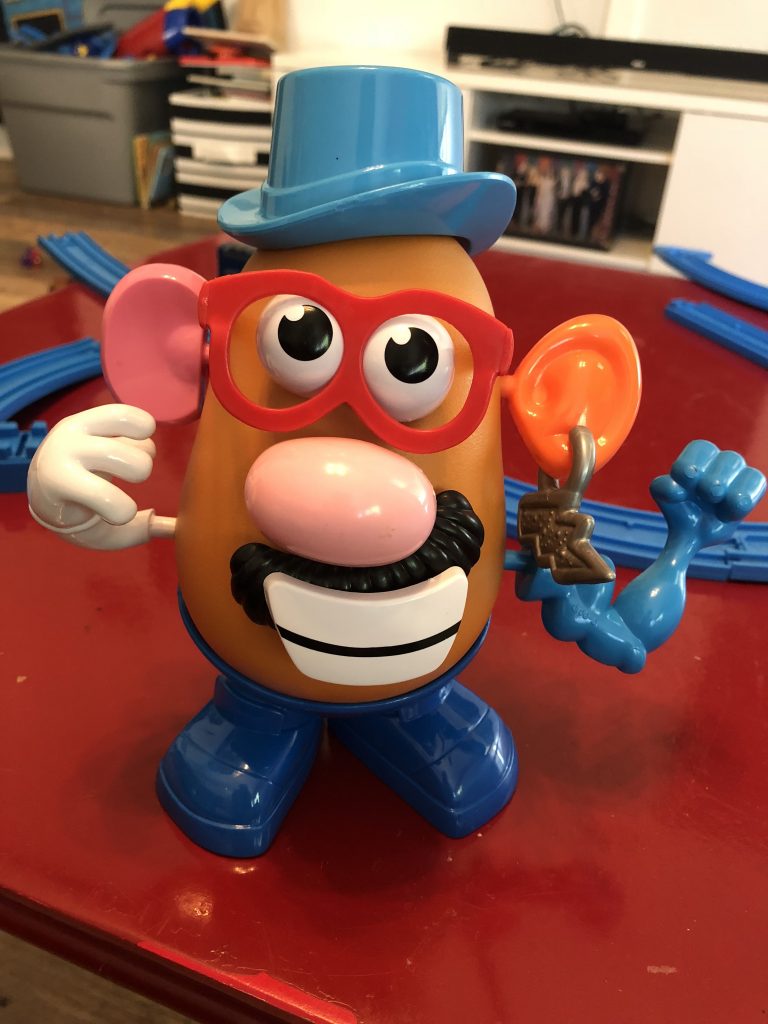
LEGO + Gears
While not technically a “puzzle,” activities like LEGOs and gears foster a more open style of creativity with a technical twist. A child gets to imagine what the end result should look like before they build it, or better yet, allow the idea to evolve and expand with the building process.
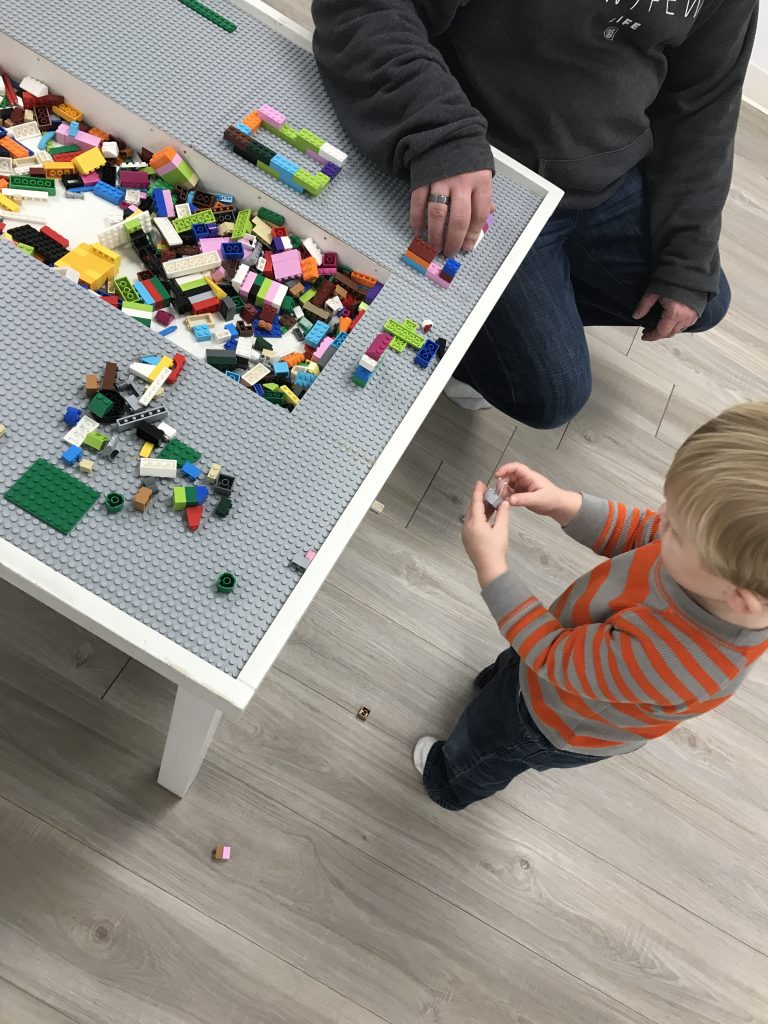
Printable/Learning Puzzles
If you’re feeling crafty, or you’re stuck inside during another Icemageddon, Pinterest is FULL of printable puzzles for all ages and categories. A quick search for “winter printable puzzles” resulted in several fun and cute options.
Fun Fact:
January 29th is National Puzzle Day! I’m guessing it’s not a coincidence that someone added that random holiday to a calendar in January. Puzzles are the perfect post-holiday, hide-from-the-weather, indoor activity. We got a few new 48-piece puzzles for Christmas we will be working on this month.






